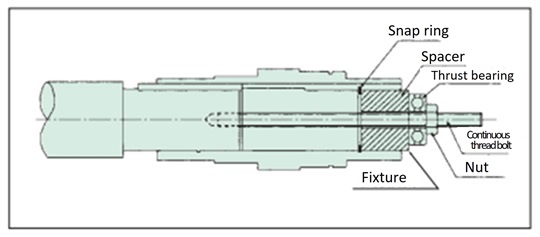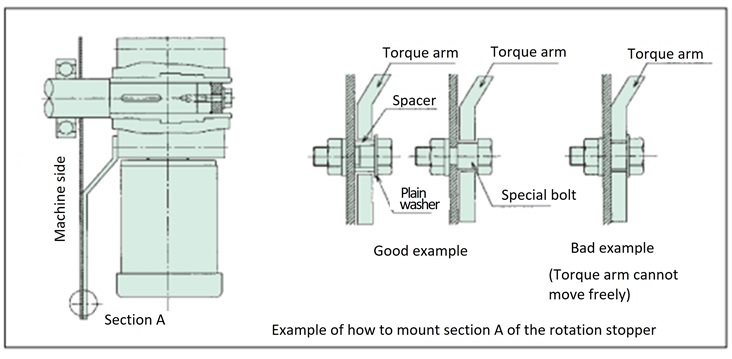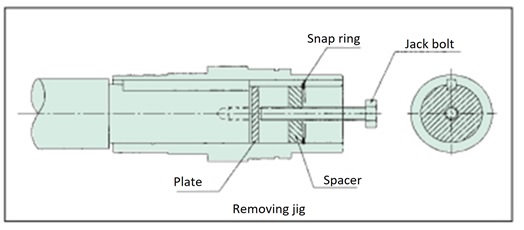Technical Data Reducers DCBL Hypoid Motor Handling
This section describes the general handling of DCBL Hypoid Motor & Driver.
For more information, see the instruction manual provided with the product.
Mounting
1. Mounting Direction
- ・Motors can be mounted horizontally, vertically, or on an incline. There are no restrictions on mounting direction.
Mounting
1. Face Mount Type
- ・When attaching the motor to the machine, use a tap of the case.
- ・When coupling the reducer, make sure the shaft is precisely centered. If it is not, this will shorten the life of the bearing, gear, and shaft, and cause noise and vibration.
- ・Center the chain and belt precisely and adjust the tension so that the load applied to the output shaft does not exceed the specified value.
- ・During coupling, be sure not to forcefully hit the output shaft, coupling, pulley, or sprocket. Doing so may damage the output shaft bearing.
2. Hollow Shaft Type
2-1. Mounting to the driven shaft
- ・The internal diameter of the hollow shaft is manufactured to JIS H8 tolerance. For normal applications, the finish of the driven shaft should be h7. For applications involving large shock or radial load, use a slightly tighter fit of js6 or k6.
- ・When installing to the driven shaft, apply molybdenum disulfide grease to the driven shaft surface and hollow output shaft internal diameter before inserting.
- ・Use the jig shown on the right for smooth insertion.

2-2. Fixing to the driven shaft
A. When there are steps on the driven shaft
Fabricate the end plate as shown in the figure below. Fix the hollow output shaft and driven shaft.

B. When there are no steps on the driven shaft
There are the following two types of fixing methods.

2-3. Preventing the torque arm from rotating
Mount the torque arm to the driven-machine side of DCBL Hypoid Motor. Mount using a hex bolt.
Provide sufficient clearance for the rotation stopper of the torque arm between DCBL Hypoid Motor and the driven shaft. Do not fix the torque arm with a rotation-preventing bolt.
If there is no clearance, the bearing in the reducer will get damaged. When the motor is started and stopped frequently or when it is repeatedly run forward and then reversed, install a rubber bush between the torque arm and the rotation-preventing bolt (or spacer) to reduce shock.

2-4. Removal from the driven shaft
- ・Remove the driven shaft from the hollow shaft while making sure that excessive force is not applied between the housing and hollow output shaft.
- ・Use the jig shown on the right for smooth removal.


